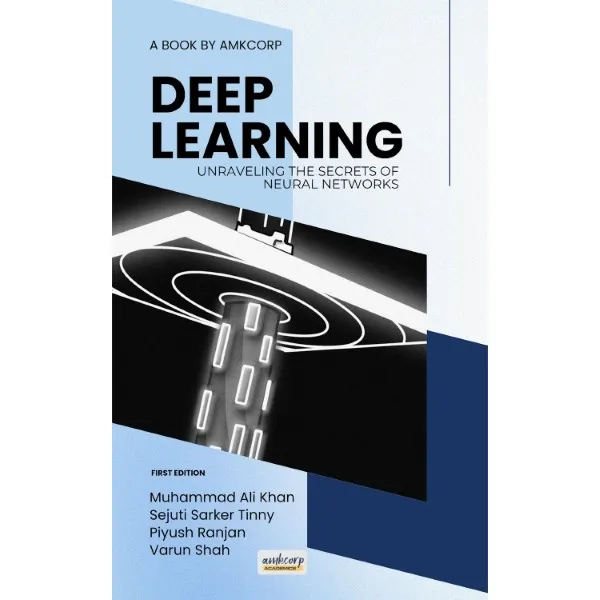Description
“Deep Learning: Unraveling the Secrets of Neural Networks” is a comprehensive guide designed for both beginners and advanced learners eager to delve into the world of deep learning. This meticulously structured book takes readers on a journey through the fundamentals, intricacies, and advanced concepts of neural networks, making it an indispensable resource for anyone looking to understand or enhance their knowledge in this field.
Starting with Chapter 1, the book introduces deep learning by defining its core concepts and tracing its historical evolution. It distinguishes between machine learning and deep learning, highlighting their unique attributes. Key terminologies and concepts are elucidated, providing a solid foundation for readers. The chapter also explores the diverse applications of deep learning across industries, the challenges faced, the tools and frameworks available, and the future directions the field might take.
In Chapter 2, readers are introduced to the basics of neural networks. This chapter covers the structure and function of neural networks, including activation functions, feedforward and backpropagation mechanisms, and loss functions. It also discusses various types of neural networks and the metrics used for training and evaluation, culminating in a practical example of building a simple neural network.
Chapter 3 delves into Convolutional Neural Networks (CNNs), which are pivotal in image processing tasks. The chapter explains the components of CNNs, such as convolutional layers, pooling layers, and fully connected layers. It discusses different CNN architectures, transfer learning techniques, and advanced methods, offering readers a deep dive into CNNs’ capabilities.
Recurrent Neural Networks (RNNs) are the focus of Chapter 4. This chapter covers the basics of RNNs, sequence modeling, and various types of RNNs, including LSTM and GRU. It also discusses the applications of RNNs, the challenges in training them, advanced architectures, and practical implementations, such as time series forecasting.
Chapter 5 explores Generative Adversarial Networks (GANs), detailing their architecture, training methods, and applications. The chapter also covers variants of GANs and the challenges associated with their training, supported by a case study on image generation and insights into the future of GANs.
Chapter 6 introduces Deep Reinforcement Learning, covering key concepts, methodologies, and case studies, such as game playing and robotics. It differentiates between model-free and model-based methods and discusses advanced techniques and challenges in this domain.
Natural Language Processing (NLP) with deep learning is covered in Chapter 7. This chapter addresses key NLP tasks, embedding techniques, sequence-to-sequence models, attention mechanisms, and advanced models like Transformers and BERT. It highlights applications in text generation and translation, offering a glimpse into future trends in NLP.
In Chapter 8, the book focuses on Deep Learning in Computer Vision, discussing image classification, object detection, semantic segmentation, and image generation. It also explores real-world applications like autonomous vehicles and medical imaging, supported by tools and frameworks for computer vision.
Chapter 9 delves into advanced topics such as meta-learning, neural architecture search, explainable AI, few-shot learning, federated learning, self-supervised learning, and multi-modal learning, addressing the challenges and future directions in these areas.
Chapter 10 provides practical guidance on implementing deep learning models using frameworks like TensorFlow, PyTorch, and Keras. It covers model deployment, performance optimization, and debugging, supported by end-to-end implementation case studies.
The ethical implications of deep learning are discussed in Chapter 11, highlighting issues like bias, fairness, privacy, regulatory aspects, and the impact on jobs and society. It promotes responsible AI practices through case studies and future directions for ethical AI.
Finally, Chapter 12 looks to the future of deep learning, discussing emerging trends, potential breakthroughs, integration with other fields, and the role of deep learning in addressing global challenges. It emphasizes the importance of community and collaborative research, educational pathways, and concludes with reflections on the road ahead for deep learning.
“Deep Learning: Unraveling the Secrets of Neural Networks” is not just a book; it’s a roadmap for anyone looking to navigate the rapidly evolving landscape of deep learning, offering a blend of theoretical insights and practical knowledge.







Reviews
There are no reviews yet.